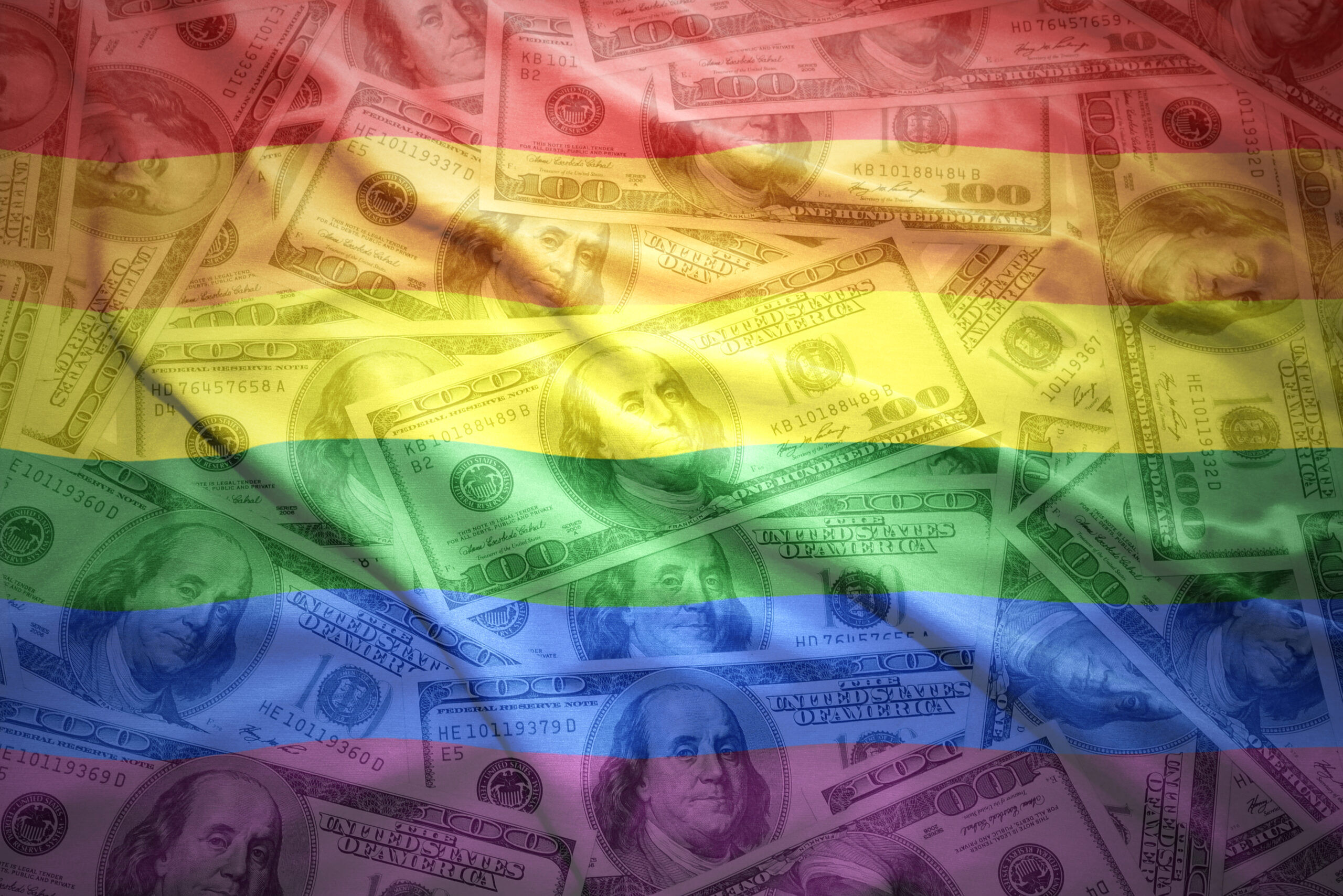Terrel Williams knew he wanted to pursue a career that made a difference in the world. So when he became interested in psychology during his junior year of high school, he decided this would be a great field to study. The 22-year-old Decatur, Illinois resident, who identifies as bisexual, currently attends college online and part-time at Colorado Technical University.
“When I heard about that, it just kind of suited me,” Williams told LGBTQ Nation. “I thought to myself, I think I can do that.”
Related:
LGBTQ+ actors get loud about the massive Hollywood strikes
Like the WGA, actors are fighting for better pay in the streaming era. They also have some big name LGBTQ+ actors supporting them.
With one year left until graduation, Williams is excited to obtain his degree, but the one thing he fears is tackling his student loans. The conversations he’s had with family and friends about this are a mix of dread, disillusionment, and detachment. But the student debt issue remains and it’s one of the biggest things he’ll have to think about after graduating.
Dive deeper every day
Join our newsletter for thought-provoking commentary that goes beyond the surface of LGBTQ+ issues
“I’m doing all this work to get a piece of paper, and I have all this money to pay back,” Williams said.
That thought is and has been on the minds of millions of Americans that deal with student loan debt. But LGBTQ+ borrowers are especially struggling. LGBTQ+ adults are more likely to have federal student loans than non-LGBTQ adults and more than a third of LGBTQ+ people between the ages of 18 and 40 are carrying more than $93 billion in federal student loans, according to a 2021 study from the UCLA Williams Institute School of Law. The study was in collaboration with the Point Foundation to highlight the student loan debt disparities of LGBTQ+ people.
Student loan debt payments have been on pause since March 2020, but that is going to change. In the recent debt ceiling negotiations, President Joe Biden and Republican House Speaker Kevin McCarthy reached an agreement to end the freeze and resume payments by late August. The agreement also restricts instituting another moratorium. Additionally, the Supreme Court recently struck down President Biden’s plan to cancel up to $20,000 in student loan debt for eligible borrowers.
“The pause was life-changing for student debtors, allowing 45 million Americans to keep food on the table, stay housed, pay for medical expenses, and even save money for retirement,” explained Maddy Clifford, deputy press secretary for Debt Collective, a debtor’s union organization that works to cancel debt in education, health care, and housing. “One important outcome is people now know exactly what it feels like to not be drowning in debt.”
The 2021 study also examines the differences within the LGBTQ+ community. A little over half (51%) of transgender adults have student debt, and 43% of LGBTQ+ adults have federal and private student loan debt.
When including race, the disparities can be even starker. According to the Education Data Initiative, Black college graduates owe an average of $25,000 more in student debt than their white counterparts. This also coincides with Black and Asian student borrowers owing the highest monthly payments, with Black borrowers at a higher disadvantage for struggling financially.
With these factors and more, it’s not surprising that many people would like input from the federal government to relieve these issues. Canceling student loan debt can be one of those solutions.
“We’ve been arguing that student debt is a policy failure and that the federal government has the legal authority to issue broadscale debt cancellation,” Clifford said.
The calls for abolishing all or part of student loan debt are not new. Sens. Elizabeth Warren (D) and Bernie Sanders (D) rolled out plans for student debt cancellation during the 2020 Presidential primary race. And since then, the support for debt cancellation has grown. Most Americans support President Biden’s plan to reduce the burden of student loan debt and believe debt relief will help lessen financial issues, especially for low-income households.
While Millennials and Generation Z take on most of the burden of student loan debt, all generations are impacted. “Not only would widespread debt relief boost the economy, freeing up people’s household budgets to spend, but it would also make him popular among people from all walks of life,” Clifford said. “Student debtors aren’t just young people, there’s a growing number of elders weighted down by crushing debt.”
Student loan debt doesn’t just affect the ability to pay monthly statements, but it impacts people’s basic needs like secure housing, health care, transportation, planning for a family or marriage, and time for leisurely activities that many like to partake in.
Even $10,000 in student debt cancellation will help close the racial wealth gap among Black and white borrowers and lower the cost of living. Furthermore, cancellation will have a minor impact on inflation and in the process, help people have a better financial future.
LGBTQ+ individuals already face constant discrimination on social, political, and economic levels. And with the rise of anti-LGBTQ+ legislation across multiple states, the livelihoods of LGBTQ+ people are getting more precarious.
President Biden recently vetoed a bill that would have scrapped his student loan forgiveness plan. The fight continues in Congress, with conservatives and Republicans attempting to block any form of relief for student debt holders. For people like Terrel Williams, he hopes that student loan debt won’t always be an obstacle and that someday it’ll be a thing of the past.
“If I get this frozen or paused,” he said, “I can finally breathe.”
















LGBTQ+ people are drowning in student debt & there’s only one way out